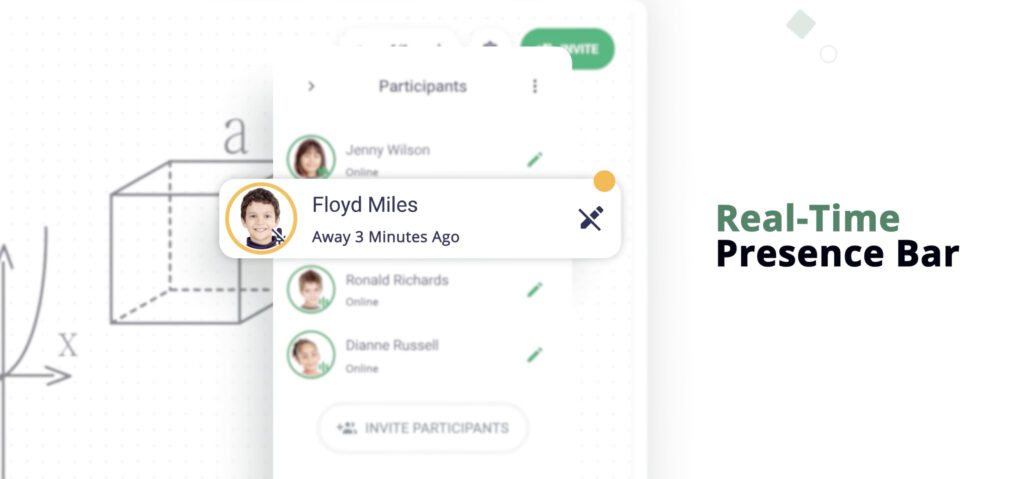For some students, math class is a nightmare. They feel anxious and stressed, and may even dread going to school. This feeling is called math anxiety, and it can have a negative impact on a student’s academic performance. It’s a real condition that affects millions of people worldwide. As a teacher, you must be aware of the signs of math anxiety and what you can do to help your students. This article will discuss what math anxiety is, the symptoms of math anxiety, and seven strategies educators can use to reduce math anxiety among their students.
What is Math Anxiety?
Math anxiety is a feeling of apprehension or fear about mathematics that can interfere with performance. It can be caused by a number of factors, including previous bad experiences with math, negative messages about math from family or friends, and a belief that one “is not good” at math.
As such, math anxiety is learned behavior that can be unlearned. Math anxiety is not caused by lack of ability; it is driven by a belief that one is “not good at” math. This belief can be changed.
Signs And Symptoms of Math Anxiety
There are a number of signs and symptoms that can point to math anxiety. These include, but are not limited to:
- Feeling nervous, anxious, or stressed about math
- Feeling that one is not “good” at math
- Avoiding math altogether
- Difficulty remembering math rules
- Having trouble concentrating in math class
- Procrastinating and feeling overwhelmed by math homework
- Relying on memorization rather than understanding
If you notice any of these signs in your students, taking action is essential. Math anxiety can have a negative impact on a student’s academic performance. It can also lead to avoidance behaviors, such as skipping math class or not doing homework.
How to Deal With Math Anxiety: 7 Strategies for Educators
As a teacher, you must be aware of the symptoms of math anxiety and be prepared to help your students overcome it. Here are seven strategies you can use to help your students deal with math anxiety:
1. Help Your Students Study Smart, Not Hard
One of the best ways to reduce math anxiety is to help your students study smart, not hard. Math is a subject that requires practice and understanding, not memorization. Encourage your students to focus on understanding math concepts rather than memorizing formulas.
Here’s a video that can help you generate interest toward math in your students:
2. Encourage Your Students to Take Their Time
Another way to reduce math anxiety is to encourage your students to take their time. Math is a complex subject; it takes time to understand math concepts. Rushing through math assignments can lead to mistakes and frustration. Encourage your students to take their time and ask questions if they don’t understand something.
3. Help Your Students Find Their Learning Style
Everyone learns differently. Some students learn best by listening to lectures, while others learn best by doing hands-on activities. Help your students find their learning style and use it to their advantage. If students learn best by doing hands-on activities, for example, allow them to use manipulatives in math class.
4. Encourage Your Students to Talk About Their Feelings
Math anxiety is a real condition that can be debilitating. It’s important to encourage your students to talk about their feelings if they’re experiencing math anxiety. This will help them understand that math anxiety is normal and there are ways to deal with it. It will also help you, as a teacher, determine what might be causing their math anxiety and design a better individual approach.
5. Use Technology to Your Advantage
Technology-enhanced learning is an excellent method for reducing math anxiety. There are many math apps and websites that can help your students learn math concepts in a fun and interactive way. You can also use technology to create differentiated assignments that meet the needs of all your students.
Pro Tip: Use LiveBoard to make your math classes more engaging and interactive. LiveBoard is an online collaborative whiteboard that allows educators and students to work on the shared workspace interactively in real time. Share your board with the classroom and use the tools and features in the app to solve problems together, encouraging collaboration between students. LiveBoard’s built-in tools, like text and drawing tools, geometrical shapes, and graph and LaTeX formula editors, will help you visualize the content, improve productivity and enhance the overall experience of your classes.

LiveBoard will also make your life as an educator much easier with its classroom management tools. The student attention tracker always notifies you if any of the students are distracted or looking at another tab during the class, which can also be a sign of math anxiety.

In addition, you can create group folders and organize your boards by subjects and students. Use LiveBoard to hold separate classes with students experiencing math anxiety on individual boards. The folder management and grouping feature will help you to easily share content with a select group of students and never confuse or lose an important board.

6. Make Math Class a Safe Place to Make Mistakes
Mistakes are part of the learning process. It’s important to make math class a safe place for your students to make mistakes. Encourage your students to ask questions and freely share their ideas, even if they’re not sure they’re right. This will help them feel more comfortable taking risks and trying new things.
7. Model a Positive Attitude
As a teacher, you can model a positive attitude towards math. When you’re passionate about math and excited to teach it, your students will likely feel the same way. Show your students that math can be interesting, helpful and fun! For starters, point out the aspects of math you are enthusiastic about and let your students discover the beauty.
Final Thoughts
Math anxiety is a real condition that can harm students’ academic performance. Use these seven strategies to reduce math anxiety in your students and create a positive learning environment.


